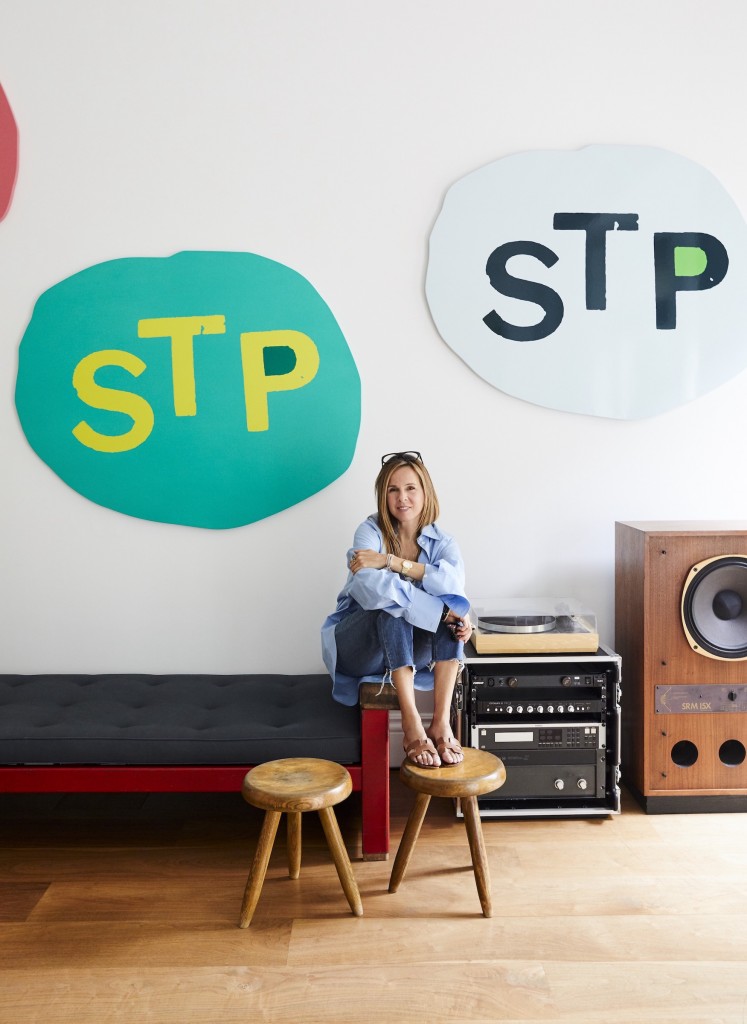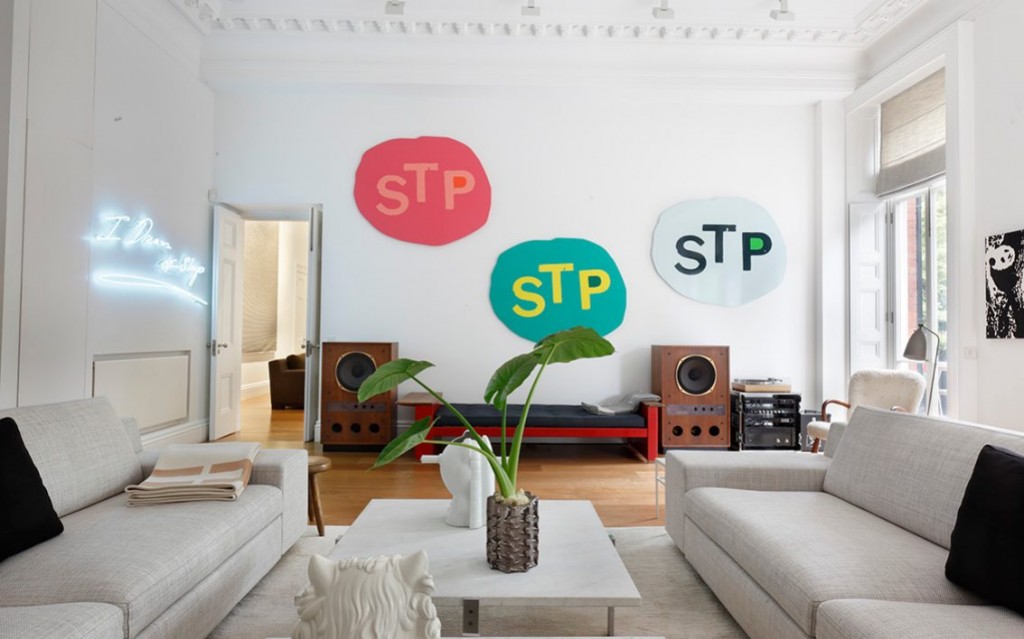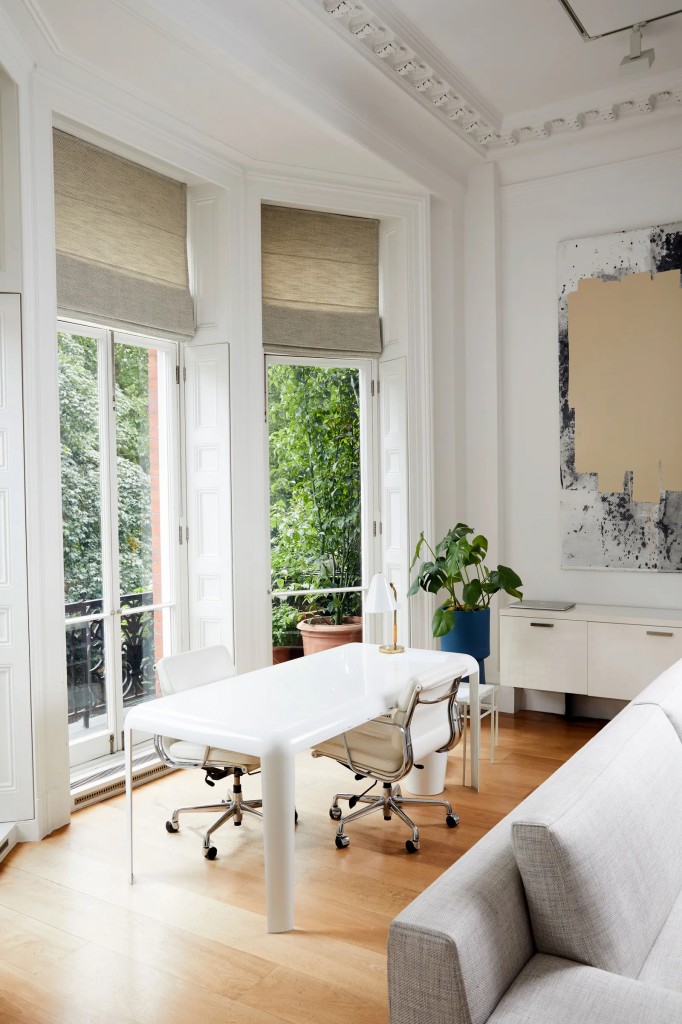Born in Madrid, Rosa de la Cruz is daughter of Cuban art collectors Rosa and Carlos de la Cruz, founders of contemporary art museum, the de la Cruz collection in Miami. She started her career as an attorney at the Guggenheim museum in New York. Having studied art and architecture courses, Rosa later worked on several design projects and started to design jewelry in 2000, and then co-founded Rosa de la Cruz London. The influence from her family and her art and design background brought her to start collecting art since the 1990s.
LARRY’S LIST collaborated with Luning Wang, Chinese art consultant and columnist at Financial Times China and Artnet China, specialized in the art market and global culture, to visit Rosa de la Cruz’s art-filled home. Rosa shared her ideas and insights about curating her art and design collection. Read on to see how a painting by Rob Pruitt matches perfectly with a piece of design furniture, which artwork she has a particular personal connection with, what art she puts in her bedroom, and why she is strong believer in education.

Luning Wang (LW): When did you start collecting? And what do you collect?
Rose de la Cruz (RC): I started collecting in the 1990s. At my home you see the collection of contemporary art built up from that time. And equally, you’ll see lots of pieces of design and furniture, mostly from the 1950s.

LW: How do you curate the artworks displayed at your home?
RC: Each room is curated with a different group of artists and designers to create a conversation within each room.
For example, in our family room, which is also the room where I work, so for me, it’s important that it’s a happy and vibrant space. So all the works there have a play with colors; they have a play with shapes.
LW: And any example that you curate an artwork and a piece of design furniture together so that they have a connection or dialogue?
RC: There is a painting a Chinese panda by the artist Rob Pruitt. And Rob Pruitt is native from Washington D.C. And I don’t know if you know, Washington has a family of pandas that were lent from China, so this is about his hometown. It creates a conversation with a wooden Pierre Jeanneret chair. And in fact, it is a continuation of the windows next to it onto the garden and a continuation of the trees behind in the garden.

LW: What else do you consider when putting artworks next to each other?
RC: Sometimes, it is interesting when the sizes of the artworks create a contrast. we have a beautiful, small painting by Peter Doig. It’s a very early Peter Doig. And it forms a great contrast because it’s a small painting versus the several rather huge Wade Guyton pieces in the same room.
LW: That is interesting. What do you like about Wade’s art?
RC: I love Wade because aesthetically to me, he’s very harmonious. And it’s minimalism, which I find very easy to live with and love over time.
But there’s something particular about “process” —he gets a canvas and he folds it in half, and then feeds it through large format printers what his design is, and then it comes out the other side. But what’s wonderful about it is, although he has designed what is meant to be printed, obviously the printer sometimes jams, the print sometimes runs or leaks. And that’s the element of “chance” — you might call it mistake or chance, but for me, I think that’s very important in the creative process: it’s not only about controlling everything, but also leaving some things to be surprises, so that we learn and we evolve.

LW: Which is the most meaningful piece in your collection?
RC: There is a series of works titled “STP” by Lucien Smith from his show of the same name, which he did with a focus on political activism and social activism to help younger artists. So they are not only beautiful piece, but they are meaningful pieces of art as well.
LW: How have your various experiences shaped your art collecting?
RC: Actually my travels and my movements are reflected in the artists I have collected. Tracey Emin who is part of the YBA movement, which was so important, reflects that period of time but also my time as a collector.

LW: Which artwork do you treasure a lot or have a special personal connection with you?
RC: It’s a work of Thomas Houseago. And he is really predominantly a sculptor. Although it’s a painting again, you can see how it is a sculpture in a 2D format. When this piece was first given to me by my parents, I loved it, and I immediately noticed that it was titled “Untitled”. But then, one day we discovered a drawing that was in preparation for the painting, and the drawing is titled “Four Brothers”; and I have four sons. So again, it’s interesting how the coincidences of things that end up in your life.

LW: Have you commissioned any artwork? How was the experience?
RC: Yes, It’s the last installation and the last work of art to enter into the collection. It’s by Scottish artist, France-Lise McGurn. France-Lise came here with the idea that this was the family space, she went back to her studio, and she did the paintings on canvases as well as on the wall space in a corridor in our home. One is painting “a.m.” and one is “p.m.”, and once again, it reflects our life, and our movement within the hallway that transitions us and takes us into our bedroom.
And I like that the women painted in this corridor balance this house out from the other works by male artists in other spaces.

LW: How about your bedroom? What art do you display there?
RC: In my bedroom, in contrast to the front rooms with some monumental paintings, we have a cozy, darker space, which is intimate and private with some smaller drawings. The ceramic pieces by Sottsass appear throughout the room. And there is a beautiful set of Pierre Jeanneret furniture from the 1950s again.
LW: How do you think art and learning are interrelated?
RC: In a corner of my bedroom, I have a separate library — a double-sided desk with the library. There I put most of the art books or design books, different things that all go over. I do love learning. I love sharing. I am a huge believer in education. I definitely got that from my parents, who have the museum in Miami; and a big part of the museum is this idea of education. And by education, we don’t only mean formal education in terms of what we studied, but also how it sparks our curiosity. I think art can do that. Art can open up different conversations. It can make you start questioning things and thinking and seeing things in a different way. So I think that’s one of my appeals for collecting is this idea of constant education. And I think it’s just one of the appeals for life in general — like meeting new people and receiving new people. It’s wonderful to share.

This interview was facilitated by Luning Wang (@luning.w).
Related: Rosa de la Cruz London
Instagram: @rosadelacruzlondon
A selection of artists Rosa collects:
Beatriz Milhazes
Chris Ofili
France-Lise McGurn
Nate Lowman
Wade Guyton
Edited by Ricko Leung





